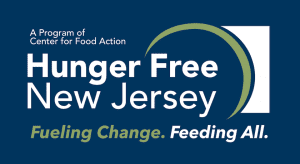Answers to common Summer meals Qs
The USDA reimburses sponsors for each qualified meal served. Sponsors located in rural areas or those that prepare their own meals on-site receive a higher reimbursement.
Summer nutrition funding can add up. For example, a summer program serving breakfast and lunch to up to 50 children for eight weeks would receive more than $12,000 in federal funding through SFSP. Rural or self-prep sites would receive even more. By serving more meals, the per meal costs decreases, allowing sponsors to maximize the amount they receive in federal funding to support their programs.
School districts already participating in the federal School Breakfast Program, National School Lunch Program and Child and Adult Care Food Program can use federal reimbursements from any child nutrition program to support the operation of summer meals and vice versa.
Many summer meal sponsors find that the Summer Food Service Program or National School Lunch Program reimbursements cover the entire cost of the meals and snacks they serve. Starting in 2022, New Jersey will also provide a 10 cent-per-meal supplement for each qualified meal, helping sponsors cover the cost of this important child nutrition program.
________________
Resource:
Food Research & Action Center, Staying in the Black: Operating a Cost-Effective Summer Food Service Program
The New Jersey Child Nutrition Fund (NJCNF), created and administered by the Reinvestment Fund and supported by the Robert Wood Johnson Foundation, provides capital funding and technical assistance for federal nutrition program sponsors, sites and meal vendors to expand the availability of fresh and nutritious food to children across the state of New Jersey.
________________
Resources:
The New Jersey Department of Agriculture provides comprehensive training to new sponsors. A department representative is also assigned to each sponsor to monitor program operations and assist with any issues that may arise.
________________
Resource:
New Jersey Department of Agriculture, (609) 292-4498.
Given the strong link between nutrition and learning, school districts have a keen interest in ensuring their students are well-nourished. Districts are well-positioned to lead community efforts to feed children. Districts that embrace feeding students can become nutrition hubs — maximizing participation in all available federal child nutrition programs — school breakfast, lunch, afterschool and summer meals. Not only does this strategy feed more children, it also boosts revenue, optimizes staff time and increases operational effectiveness.
Serve breakfast after the bell. Serving breakfast during the regular school day — rather than before school — ensures that all students receive the nutrition they need to concentrate and learn.
Serve summer meals. Summer nutrition is critical for helping students stay nourished when school is out and hunger sets in for far too many children.
Serve afterschool meals. Snacks and suppers help students and working parents, ensuring children have healthy food in the afternoon and evening hours.
The New Jersey summer meal legislation requires districts to become either a summer meal sponsor or site. Generally speaking, operating a site is much less onerous than becoming a sponsor. Sponsors are responsible for:
Submitting an application to the New Jersey Department of Agriculture to participate in SFSP,
Providing all necessary documentation,
Attending state-sponsored trainings,
Identifying and/or recruiting sites,
Providing training to sites,
Ensuring sites meet health and safety standards and accurately account for meals served,
Providing meals to sites,
Submitting claims for meal reimbursements to the New Jersey Department of Agriculture, which then submits claims to the USDA and reimburses sponsors.
While sponsors bear more responsibility for program administration, acting as a sponsor can give school districts more control over the program, including the type of food served, hours of operation and other considerations. School districts that become sponsors can also serve community-based sites, such as libraries, parks, pools, housing developments and local recreation
programs, including those run by municipalities and/or community and faith-based organizations. This is a good way to expand participation and fiscally strengthen programs. The more meals served, the higher the federal reimbursements.
Site Responsibility
Sites must meet safety and health standards, serve meals at the designated times, accurately account for meals served and report the number of meals served to sponsors. Sites do not have to pay for meals or other costs associated with food service. They must, however, provide staff to maintain adequate supervision for participating children.
Key questions to consider when deciding whether to become a sponsor or a site:
Does the community already have a sponsor serving summer meals? If so, district officials should explore the possibility of adding schools as summer sites under that sponsor.
Is there adequate funding for start-up costs? If not, can funds be secured?
What school buildings are available to become meal sites?
Which schools have summer programs operating?
Are there enough students in those programs to make sponsorship viable?
Data can help districts target areas that would benefit most from summer meal sites. Data can be used to identify service gaps in your community, helping to strengthen existing programs and locate potential new sites. Statistics are also helpful in developing
outreach efforts and boosting the reach of summer meal programs.
________________
Resource:
USDA’s Using Data fact sheet provides links to key databases, mapping tools and calculators
Open sites feed any child who arrives for a meal. No identification or income verification is required.
Open sites must be located in districts where at least half of children are eligible for free or reduced-price meals. Under federal rules, schools participating in SFSP must be open to all children in the community. Closed sites serve only children enrolled in a particular
program. A hybrid — sometimes referred to as open enrolled — means children are required to register but parents do not pay any program fees.
A major challenge for sponsors of open sites is determining how many meals to order or prepare, as attendance can vary widely from day to day. Providing regular activities, tasty food and effective marketing helps to ensure more consist attendance.
Mobile meal delivery is growing in New Jersey and across the country. Mobile meal programs allow sponsors to serve children in places where transportation or safety issues may prevent children from visiting meal sites. This can be a good option for a school district that lacks access to a kitchen or is located in a rural area where
students have difficulty getting to a school in the summer.
Operating a successful mobile program requires planning, coordination and resources to outfit and staff a food truck. It’s important to first assess whether mobile feeding may be appropriate for your community.
________________
Resource:
USDA’s Mobile Feeding Fact Sheet


